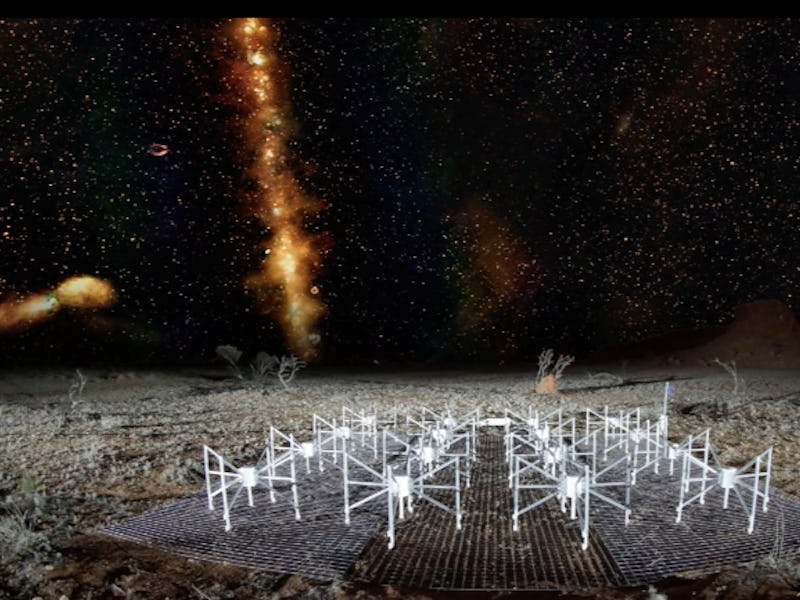In order to see the full range of wavelengths in the night sky you’ll need more than the human eye. But thanks to GLEAMscope, all you really need is a smartphone.
GLEAMscope, a project funded by Cardiff University, allows you to view the universe in a range of wavelengths ranging from X-rays to “GLEAM” frequencies of 72-231 MHz. GLEAM, or GaLactic and Extragalactic All-sky Murchison Widefield Array, allows for astronomers to see the night sky in radio waves invisible to the human eye and optical telescopes. Because GLEAM shows radio waves in a distinct array of blue, green, and red, astronomers are better able to see the processes of the universe at work and find previously missing pieces of events like Supernovas.
The app is like a combination of Google’s Skyviewer and the newly enhanced Google Earth VR — except instead of an expensive HTC Vive headset, all you need is an Android phone (sorry iPhone users) and — if you really want the full 3-D effect — Google Cardboard.
On the screen, you can see the three “radio colors of red, green and blue, which determine the astrophysics of the object. Red indicates 72-103 MHz, green is 103-134 MHz, and blue is 139-170 MHz. What look like “stars” are in fact distant radio galaxies normally invisible to the human eye. Toggling your phone around, you can see the universe from different northward angles.
The night sky in "GLEAM" vision
The app also enables you to toggle to other frequencies, such as x-ray and microwave.
The universe see through microwaves.
Of course, the app isn’t really showing you a real-time image of the universe. Instead, it’s an integration of images from more than 30,000 galaxies, observed from the Murchison Widefield Array low-frequency radio telescope, stationed in Western Australia.
“The human eye sees by comparing brightness in three different primary colors – red, green and blue. GLEAM does rather better than that, viewing the sky in 20 primary colors,” Dr. Natasha Hurley-Walker, from Curtin University and the International Centre for Radio Astronomy Research tells Interesting Engineering “It even beats the very best in the animal kingdom, the mantis shrimp, which can see 12 different primary colors.”
The app is based off Chromoscope, a browser-based simulation released in 2010 that allowed you to toggle between different wavelengths to view the night sky. While Chomoscope might have been cool for a middle schooler six years ago, GLEAMscope is a major, trippy upgrade.
